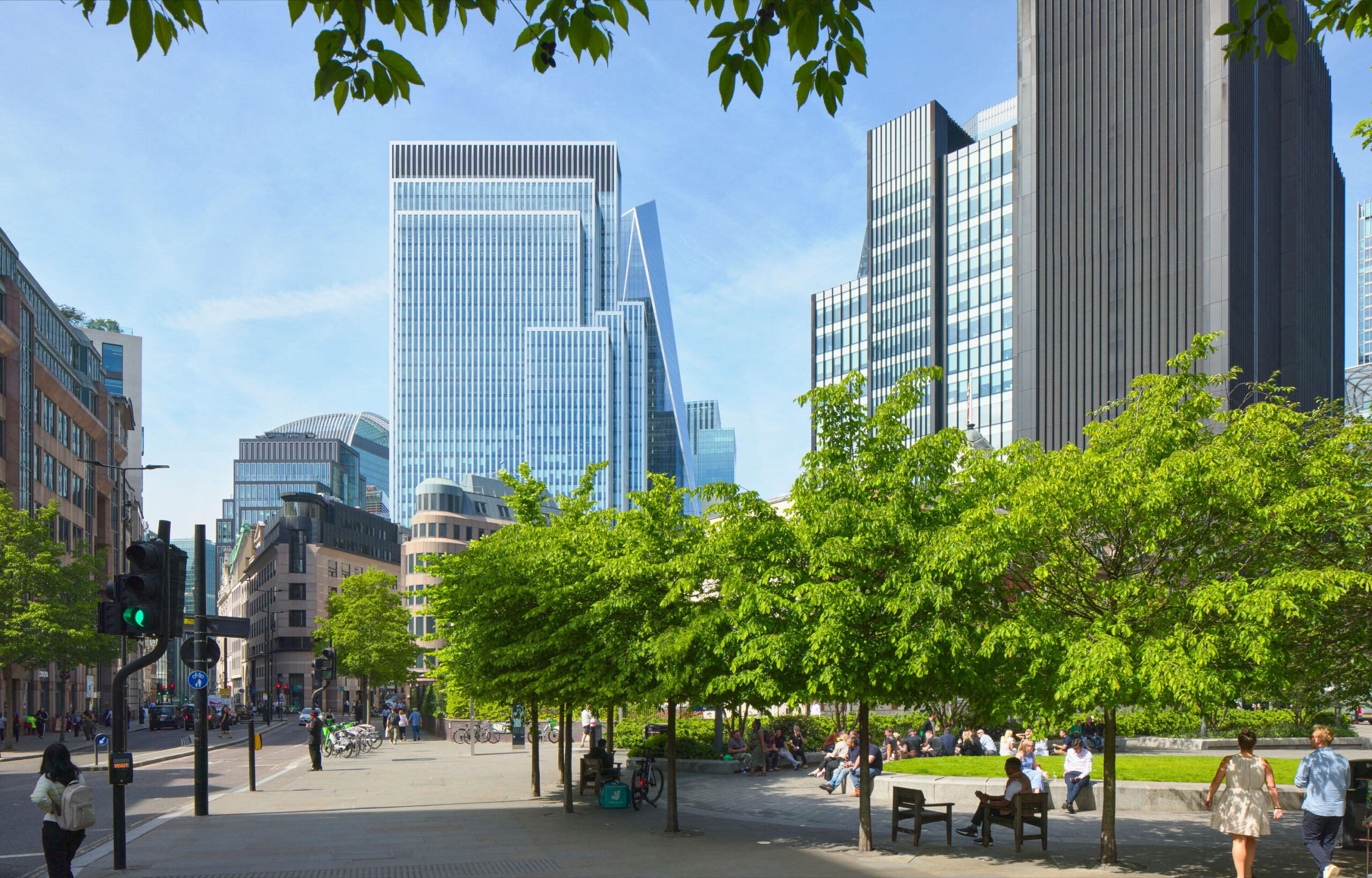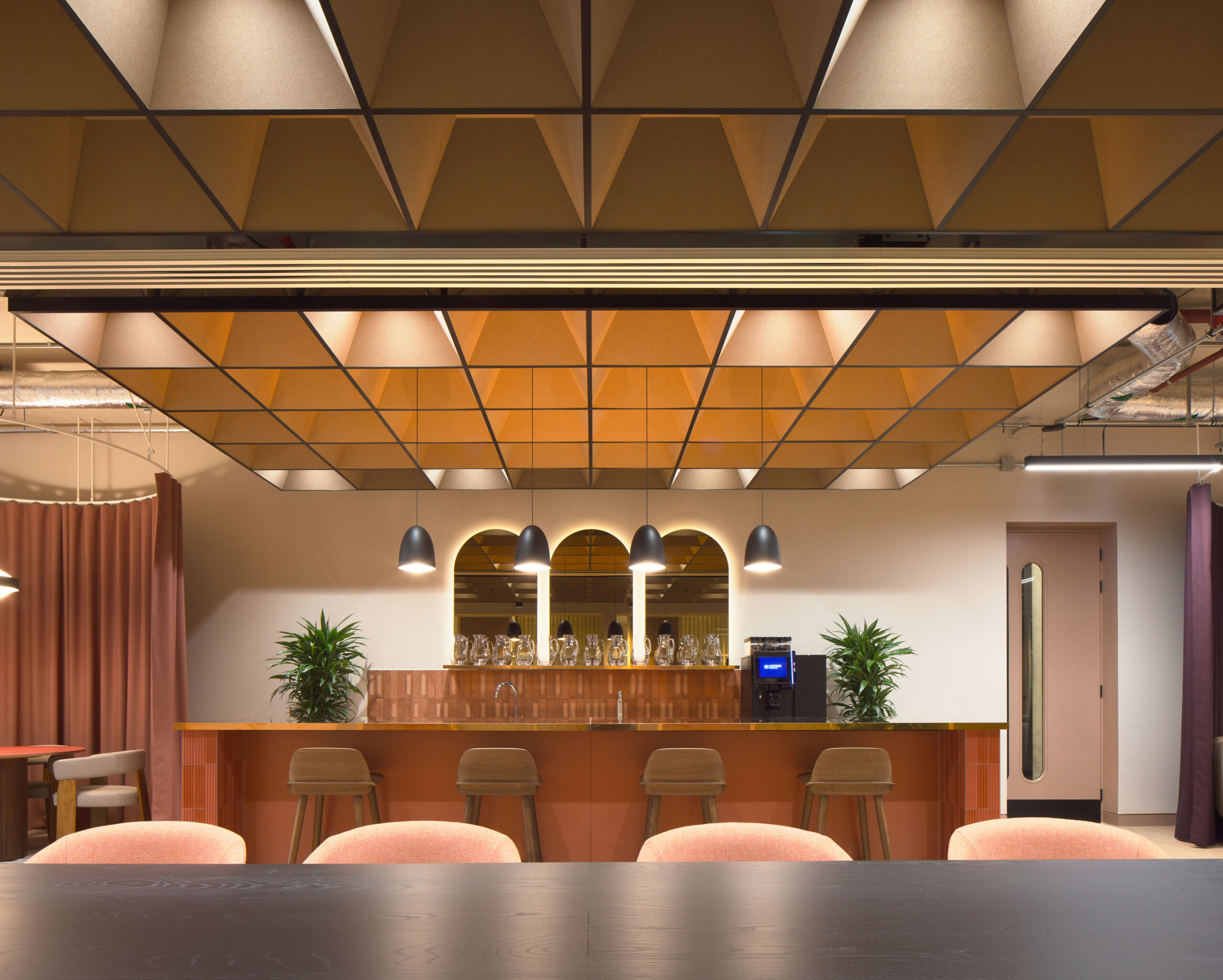
The designs centre around innovatively reusing the retail structure, sustainably retaining as much of it as possible and embedding health, wellbeing, and social amenity into the core of the space. By refurbishing rather than developing a new building, approximately 14,000 tonnes of CO2 will be saved. Hammerson and Make are targeting a BREEAM ‘Excellent’ rating, an EPC rating of A, a ‘Gold’ WELL Standard for occupier wellbeing, and a ‘Platinum’ WiredScore certification, creating a 2030 LETI Band A-compliant development.
The proposed new 200,000ft2 workspace is expected to accommodate up to 2,000 people and will be the best-connected offices in Birmingham, with unrivalled access via train and tram, as well as benefitting from excellent cycle and pedestrian access, and integration with Hammerson’s wider Bullring Estate. The team has worked closely with key stakeholders, including Network Rail, Birmingham City Council and West Midlands Combined Authority, to create a design that will serve as a leading-edge workspace for the city and its businesses and staff.
Drum will extend the former department store’s atrium through all four floors of the building to include a sweeping, open, communal entrance that widens as it rises, providing visual connectivity between the floors and drawing daylight right down through the heart of the space. It will also lead to a newly created rooftop garden lounge, an important external, communal space for residents. Green walls on each level will give the appearance of the garden spilling back down through the building.

As part of the proposals, the ground floor will be repurposed to deliver a rich amenity offer that supports tenants and enhances the experience for other visitors. The 40,000ft² space will complement the existing food and hospitality hub in Grand Central, adding a combined hospitality space with restaurant, bar and food market. In addition, the proposals will create space for a premium grocery offer, gym, wellbeing amenities, flexible events space, and end-of-trip facilities for cyclists.
Harry Badham, Chief Development and Asset Repositioning Officer at Hammerson, said: “This project is the next step in Hammerson’s vision to transform our Birmingham estate, creating a truly multi-use asset that thrives due to its relevance and diversity. Inspired by the 15-minute city concept, Drum is also an original and highly important evolution of workplaces, built on the principles of connectivity, amenities and sustainability. It will bring to Birmingham a new type of workspace that meets the requirements post-pandemic of established and start-up businesses, creating a new world-class environment at this key national interchange and gateway to the UK’s fastest growing city.”
Ken Shuttleworth, Founding Partner at Make Architects, commented: “We’ve been creatively considering how we rethink big box retail within city centres to ensure we can enliven these key spaces and draw people back into the workplace by prioritising wellbeing and dynamism. We’ve applied this here, so the design for Drum goes beyond a traditional workspace in every sense.”

This new workspace comes after Hammerson undertook an extensive review of Grand Central to assess opportunities to reposition the scheme for the future, sustainably reusing the existing space directly on top of Britain’s most connected railway interchange.
Greg Willis, Project Architect at Make Architects, said: “The designs work really hard to create an outstanding workplace while saving significant embodied energy through the re-use of the structure.”
The proposals reflect Hammerson’s strategy to reinvigorate its prime urban estates through diversifying uses while maximising the re-use of embodied carbon in existing buildings.
Subject to achieving planning consent, work on the transformation will begin later this year, with the potential for completion in 2025.




































